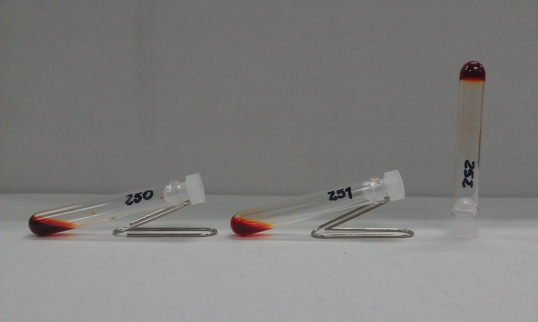Group
(MANA)ネットワーク錯体ユニット (MANA) Reticular Materials Unit
Result H24
Isomers of Metal-Organic Complex Arrays

M. Fracaroli, K. Tashiro, O. M. Yaghi,Inorg. Chem., 51, 6437–6439, 2012.
Merrifield solid-phase peptide synthesis is a well-established synthetic technique for polypeptides, where the order in which the amino acids are added determines their sequence in the product. By taking advantage of the consecutive nature of this procedure, we have successfully constructed and isolated a series of sequential isomers of heterometallic triad complexes composed of Pt(II), Ru(II), and Re(I) metal centers with a hexapeptidic backbone. These isomers are the first set of isolated heteronuclear trimetallic complex isomers so far. We also found that these isomers exhibit a sequence-dependent self-assembling property, where the Re–Ru–Pt sequence has a distinctively stronger gelation capability than the other sequences such as Ru–Pt–Re and Ru–Re–Pt.
Selective Supramolecular Fullerene-Porphyrin Interactions and Switching in Surface-Confined C60-Ce(TPP)2 Dyads

S. Vijayaraghavan, D. Écija, W. Auwärter, S. Joshi, K. Seufert, A. P. Seitsonen, K. Tashiro, J. V. Barth, Nano Letters, 12, 4077–4083, 2012.
C60 was introduced onto the monolayer or isolated form of a cerium double-decker compound on the silver substrate at 120 K by its sublimation under vacuum. STM observation of the resultant hybrids at 6 K revealed that C60 located on the cerium complex with neither any hopping migration to the neighboring cerium complex nor rotations on the same cerium complex. Thanks to such frozen dynamic motions of C60 on the cerium complex, two different orientations of C60, with respect to the underlying cerium complex, were visualized separately, where the more than half of C60 put one of its carbon atoms at the most proximal position to the underlying cerium metal center, while the remaining less than half made one of its 6:6 ring-juncture C–C bonds closest to the metal center. Application of a positive sample voltage over 1.8 V to the hybridized C60–cerium complex dyad structure allowed to switch the C60 orientation to the other one without any hopping migration of the C60. Of interest, the conductivity through C60–cerium complex dyad, as evaluated by using the STM tip, was significantly dependent on the C60 orientation, where the major one expected to have stronger C60–cerium complex interactions, exhibited distinctly larger tunnel current level than the minor one. Further detailed analysis revealed that the major orientation provided two distinguishable current levels, probably due to the symmetry lowering of the electronic configuration of the cerium complex on the silver surface. Therefore, the supramolecular C60–cerium complex dyad structure fabricated on a silver substrate can be regarded as a tristable molecular switch controlled by STM.
